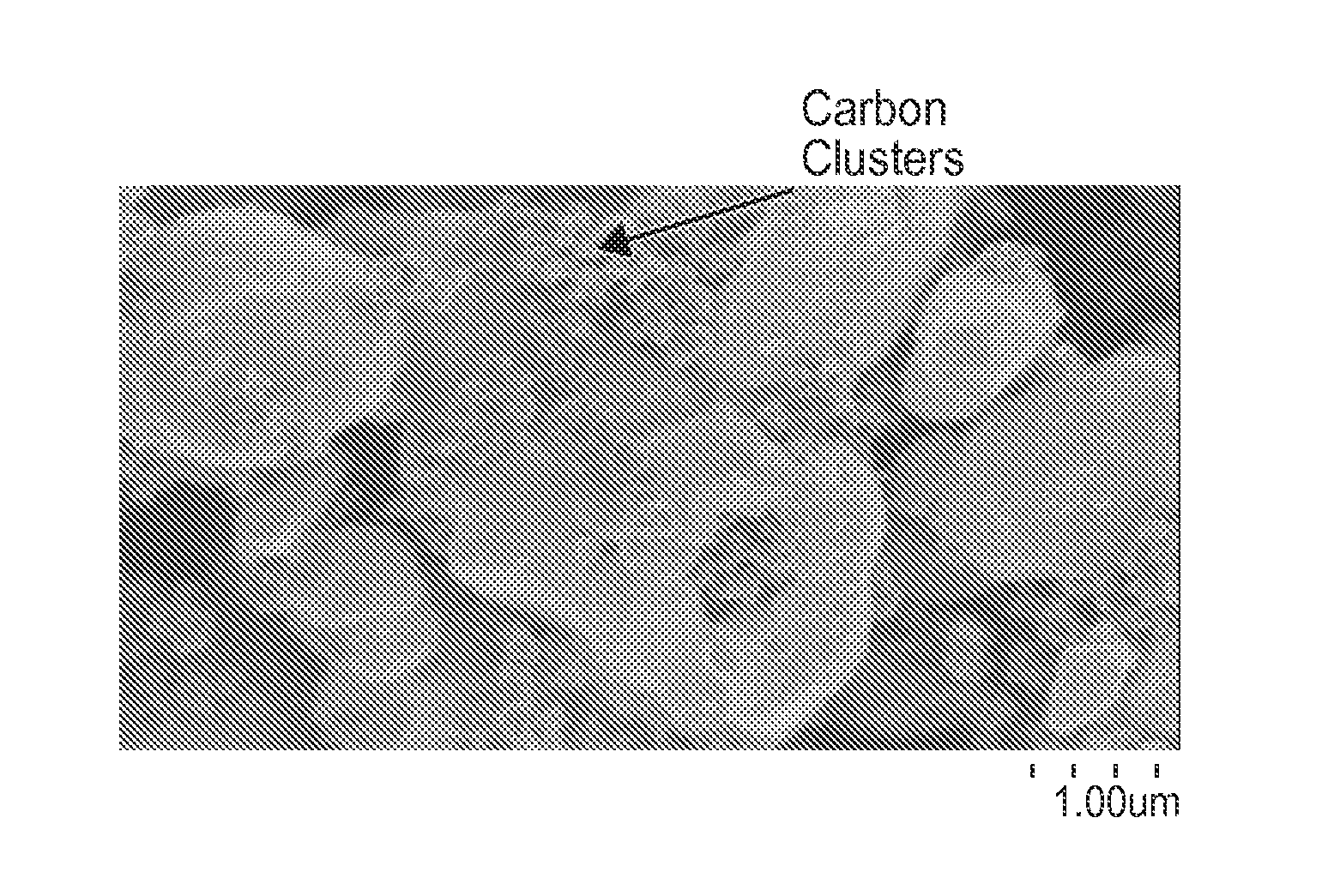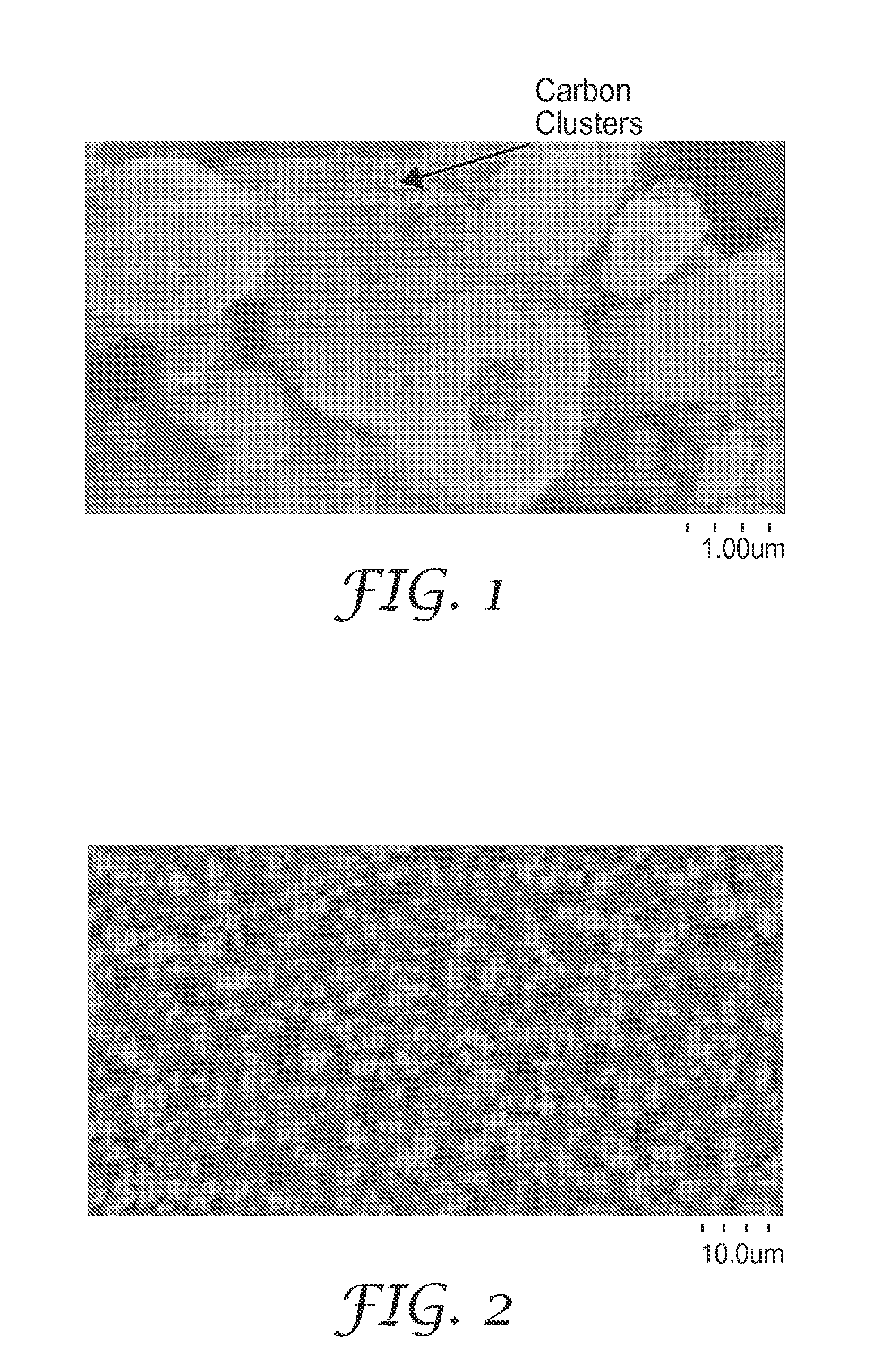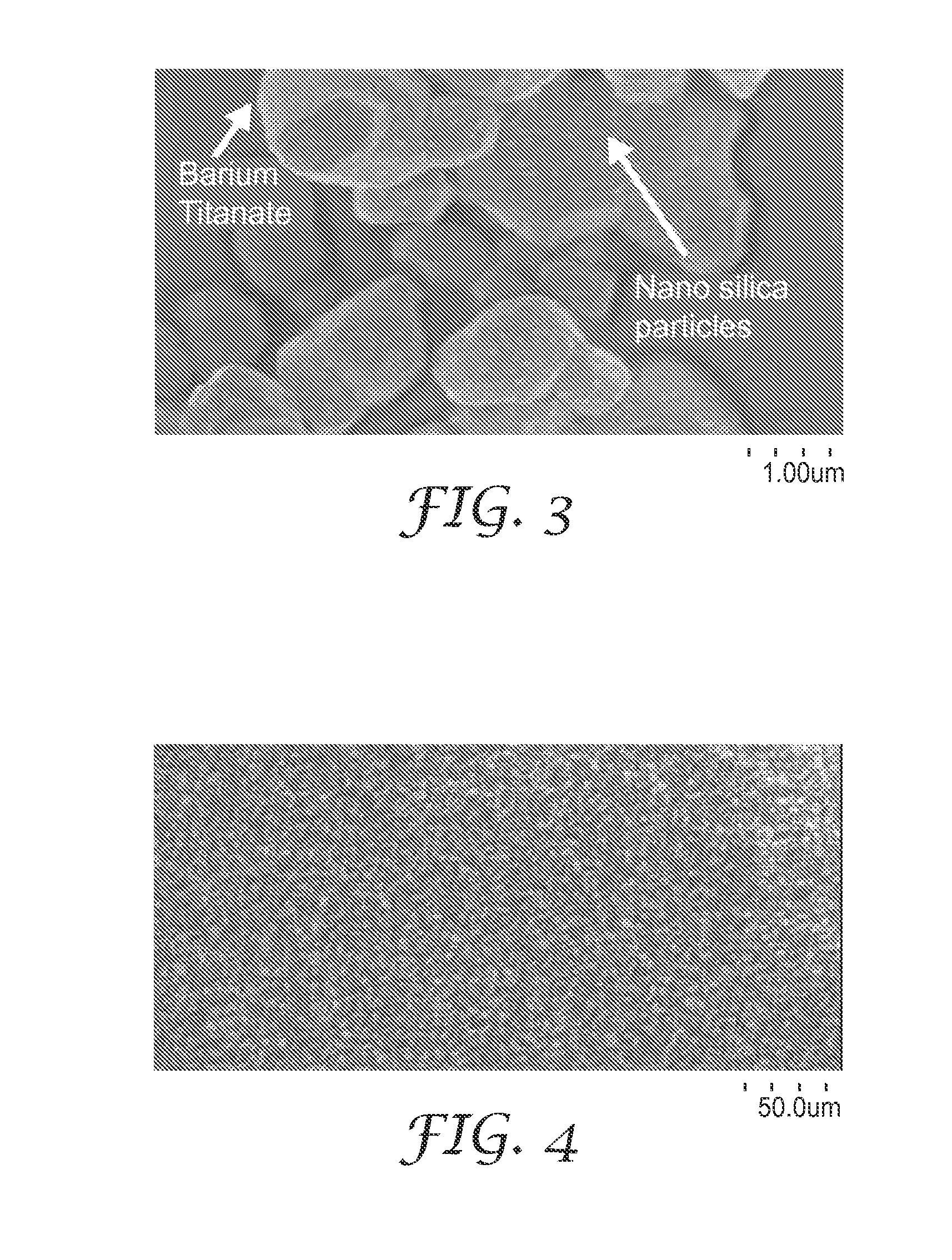Dielectric material with non-linear dielectric constant
- Summary
- Abstract
- Description
- Claims
- Application Information
AI Technical Summary
Benefits of technology
Problems solved by technology
Method used
Image
Examples
examples 6-8
Fillers with Different K Values
[0066]In these examples, barium titanate particles were substituted with silica, titanium dioxide calcium titanate, and strontium titanate particles. Silicone rubber disks were prepared as described for Examples 1-5 after grinding 30 volume percent of each type of inorganic particle with 3 volume percent of carbon powder. Electrical properties of each of these disks were then measured. The test results are summarized in Table 3, along with the test results for Example 3. In addition, non-linear dielectric properties were measured for Examples 6-8. The test results are shown in FIG. 8.
TABLE 3InorganicDielectricparticleCompositeDissi-BreakdownInorganicdielectricDielectricpationstrengthEx.particleconstantConstantfactor (D)(V / mil)6Silica38.90.0322687Titanium dioxide70-8011.90.0052058Calcium Titanate200-30018.40.0142173Barium Titanate2000-400021.70.0139180.4
example 9
[0067]In this example, carbon powder was substituted with 18 volume percent aluminum powder (10 micron size) (calculated using a density of 1.5 g / cc). A silicone rubber disk was prepared as described in Examples 1-5 after grinding the Al powder with 24.5 volume percent barium titanate. The resultant disk had a dielectric constant (K) of 20.8 and a dissipation factor of 0.022.
example 10
Preparation of Hydrophobically Modified Nanosilica Particle
[0068]A mixture of 100 grams of colloidal silica (16.06 wt. % solids in water; 5 nm size), 7.54 grams of isoctyltrimethoxy silane, 0.81 grams of methyltrimethoxysilane and 112.5 grams of an 80:20 wt / wt. % solvent blend of ethanol:methanol were added to a 500 ml 3-neck round bottom flask (Ace Glass, Vineland, N.J.). The flask containing the mixture was placed in an oil bath set at 80° C. with stirring for 4 hours to prepare hydrophobically modified nanosilica particles. The hydrophobically modified nanosilica particles were transferred to a crystallizing dish and dried in a convection oven at 150° C. for 2 hours.
Nanosilica Particle Modification of Barium Titanate Filler:
[0069]Barium titanate particles (particle size 0.8-2.1 microns) were modified by mixing (using a spatula) with the hydrophobically modified nanosilica particles (0.75 wt %) and dispersing in excess toluene. The barium titanate and nanosilica particle mixture w...
PUM
 Login to View More
Login to View More Abstract
Description
Claims
Application Information
 Login to View More
Login to View More - R&D
- Intellectual Property
- Life Sciences
- Materials
- Tech Scout
- Unparalleled Data Quality
- Higher Quality Content
- 60% Fewer Hallucinations
Browse by: Latest US Patents, China's latest patents, Technical Efficacy Thesaurus, Application Domain, Technology Topic, Popular Technical Reports.
© 2025 PatSnap. All rights reserved.Legal|Privacy policy|Modern Slavery Act Transparency Statement|Sitemap|About US| Contact US: help@patsnap.com



